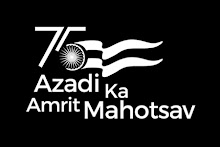7.7.08
State of the Union
India, which like the EU, is a union of states. But unlike the EU, it is both a political and an economic union. The Constitution divides all powers, both political as well as fiscal, between the Centre and the states. Over the years this division of powers has remained broadly unchanged and has, by and large, worked well. At the political level, we have not experienced many strains from within, barring problems in Punjab in the 1970s and 1980s, J& K (though that has a separate genesis altogether) and parts of the North-East. But at the economic level, the union is now showing signs of growing tension. And these are increasing rather than decreasing as regional inequalities widen. This was less of an issue in the decades immediately after independence when there was virtually no regional political party of any significance and most states were ruled by the same party as at the Centre. Hence they were willing to put national interests ahead of regional. Today the situation is quite different. Richer states are increasingly unwilling to share the fruits of their prosperity with poorer states (the issue of horizontal equity that successive Finance Commissions battle with).NOR are states content with the division of taxation powers. Today this is heavily skewed — roughly 65:35 in favour of the Centre — whereas when it comes to expenditure, it is just the other way round, states bearing roughly 65% of total expenditure. So whether it is royalties on mineral wealth or sharing of taxation powers, states want more of a say. There is also the related issue of the growing disconnect between the economic power of the richer states and their political voice (the more prosperous southern and western states have a smaller number of seats in the Lok Sabha compared to poorer states in the North and East). Delimitation will only worsen this disconnect; at the same time, it cannot be put off for ever.On the political front too, the union is showing signs of strain. The central government’s reliance on regional parties for support has greatly weakened its political power. Witness, for instance, the excessive clout enjoyed by the DMK, and now the Samajwadi Party, with the UPA government (likewise by the Telegu Desam with the previous NDA government). This has often resulted in the Centre being armtwisted into decisions that are not always in the best interests of the nation as a whole.At the same time the Centre’s hands are tied when it comes to issues like tackling terrorism, the growing security threat posed by Maoists in close to a third of the country’s districts, inter-state river-water disputes and climate change.We can brush all this under the carpet; the issues raised are far too complex to even contemplate; especially when we have far bigger and more immediate problems like rising inflation and slowing growth on hand. But sometime or other we will have to face up to the consequences of the distinct shift in the balance of power between the Centre and the states and between states. Whether we like it or not, the reality is the Indian Union will stay robust only as long as states see merit in staying together. A situation where economic power has shifted to the Centre even as political power has shifted to states (and disparately between them) is bound to test this robustness. The present situation is, clearly, quite different from that envisaged by the Constitution makers or indeed what was warranted by our needs at Independence.Successful unions are those that adapt to changed realities. Our Constitution makers had the foresight to realise this and incorporate elaborate provisions for amending the Constitution, including to the division of powers between the Centre and states. As in the EU, the final arbiters must be the people; but unlike in the EU, there seems to be little informed debate on this either within the political class or the nation at large.
Subscribe to:
Post Comments (Atom)



No comments:
Post a Comment